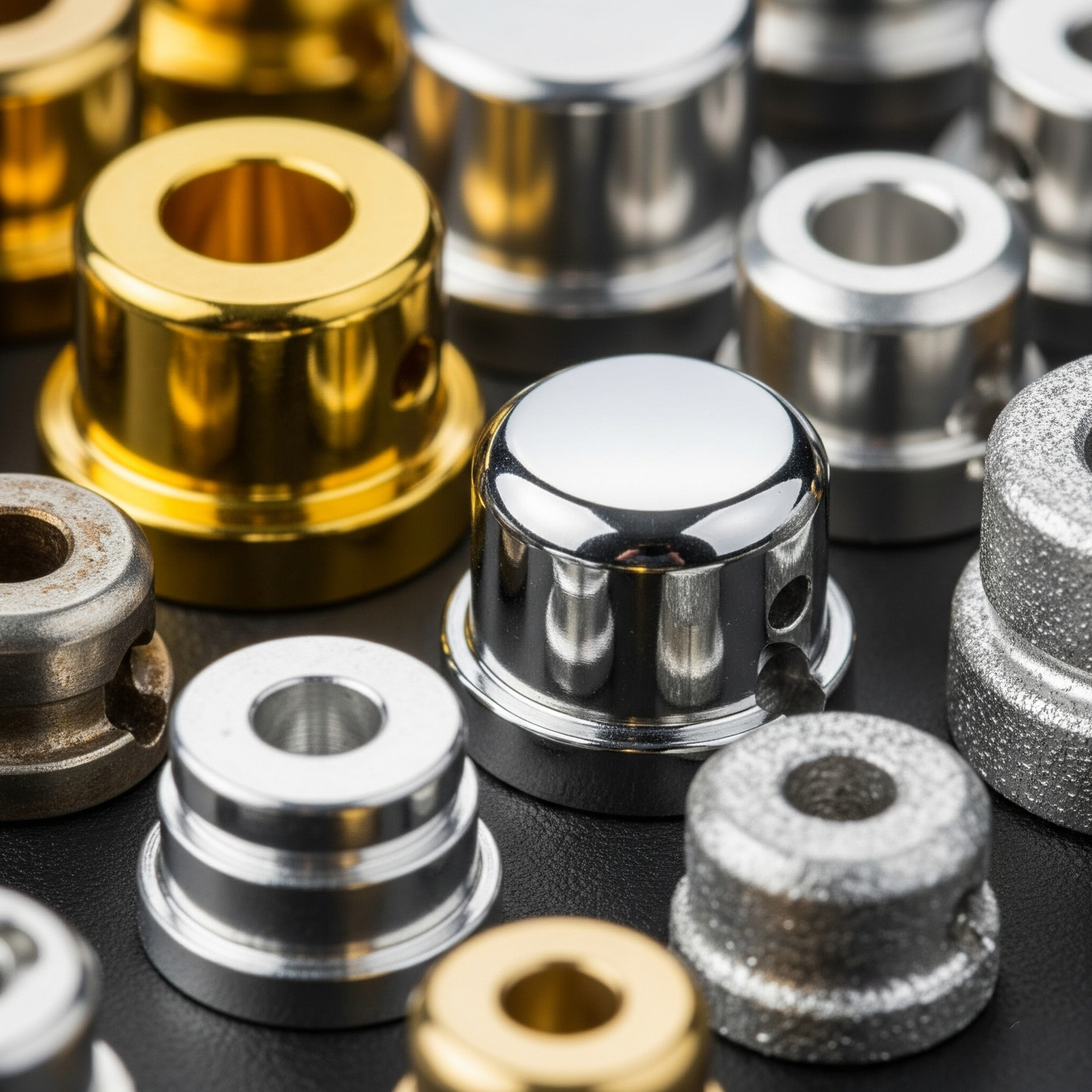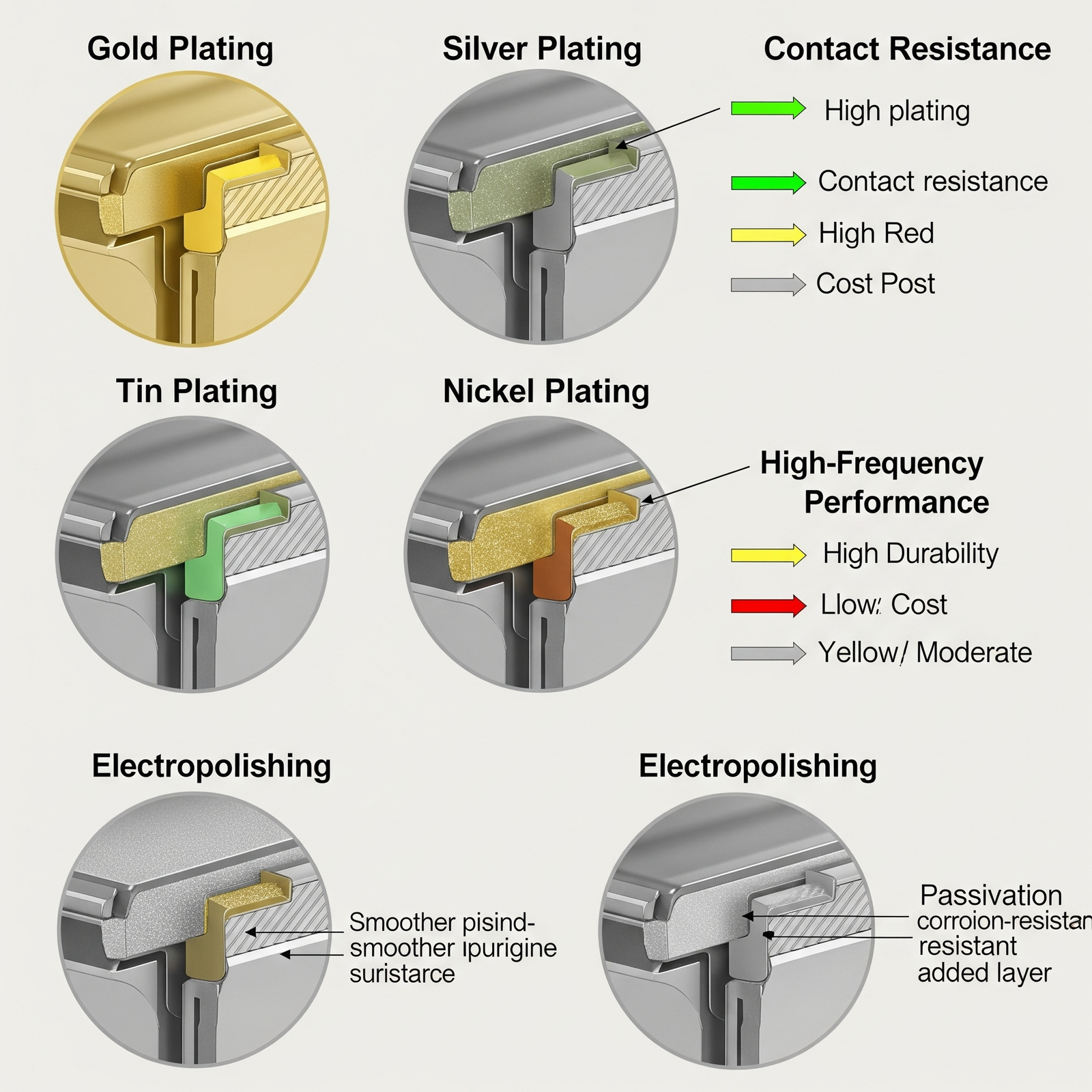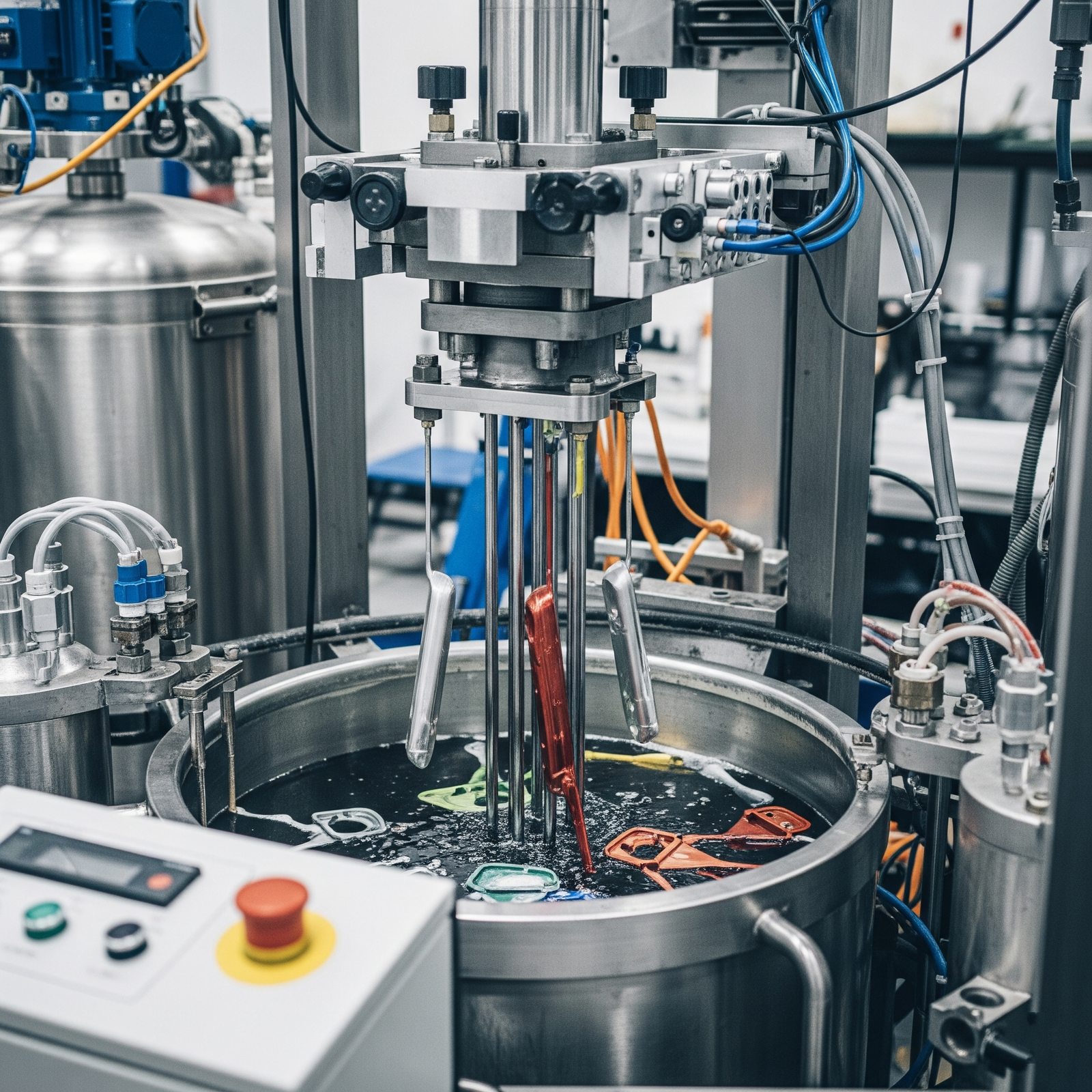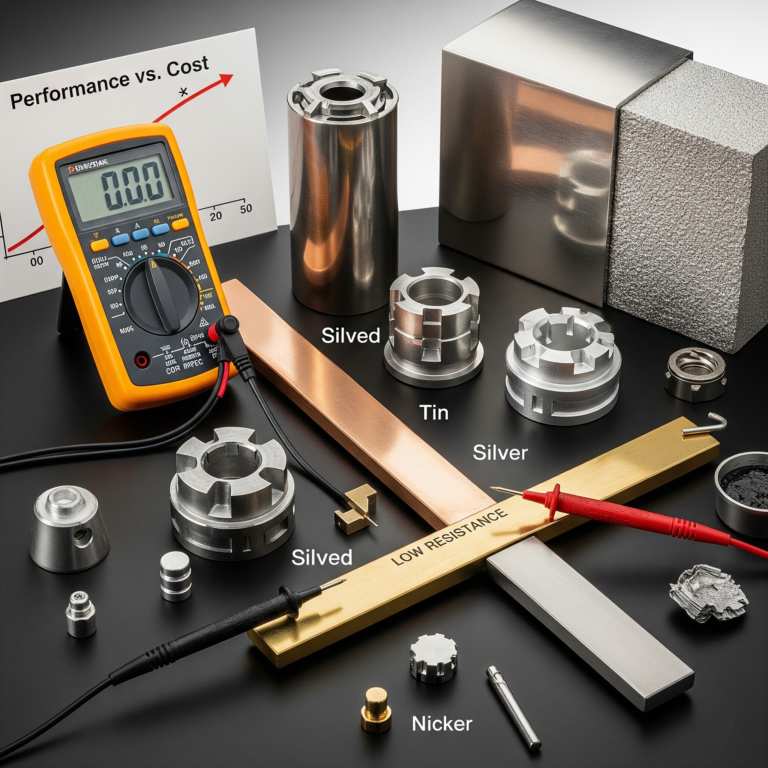
Electrical failures often don’t come from the base metal — but from the surface.
We help engineers and OEMs fix conductivity problems1 by applying the right surface finish2 — whether it’s gold, silver, tin, or others tailored to both performance and budget.
In this article, you’ll learn how different surface treatments3 affect conductivity, and how to choose the best option for your design.
Why Surface Condition Matters More Than You Think

Even highly conductive materials like copper or aluminum can suffer poor performance due to:
- Oxidation and surface corrosion
- Roughness or micro-contaminants
- Inconsistent contact area
- Poor compatibility with mating surfaces
👉 The result? Higher contact resistance4, signal loss, or product failures.
The right surface finishing prevents these problems — and improves long-term reliability.
Which Finishes Enhance Electrical Conductivity?
| Finish Type | Conductivity Performance | Corrosion Protection | Best For |
|---|---|---|---|
| Gold Plating | ★★★★★ Excellent | ✅ Excellent | PCB contacts, aerospace, medical |
| Silver Plating | ★★★★★ Highest | ⚠️ Oxidizes over time | RF, microwave, power contacts |
| Nickel Plating | ★★★★ Good | ✅ Durable | Connectors, general-purpose surfaces |
| Tin Plating | ★★★ Moderate | ✅ Cost-effective | Terminals, consumer electronics |
| Electropolishing | ★★ Mild improvement | ⚠️ Depends on material | Stainless steel ground contacts |
| Conductive Coatings | ★★–★★★ Varies | ✅ Versatile | Enclosures, EMI shielding |
How to Select the Right Finish for Electrical Applications

Ask these key questions:
- Need extremely low contact resistance? → Gold plating is your best choice
- Working in high-frequency environments? → Silver works well, but needs protection
- Want something durable and cost-efficient? → Tin or nickel plating fits best
- Dealing with stainless steel? → Consider electropolishing5 + passivation
🔍 Quick Tip
Gold plating is unbeatable for long-term, low-resistance performance — especially in critical signal or low-current applications.
💡 Pro tip: Use selective gold plating6 to reduce cost — only coat the actual contact area, and use nickel elsewhere.
✅ Why Engineers Trust Us for Surface Finish Selection

- 15+ years helping electronics, medical, and aerospace teams
- Real-world experience with contact resistance, EMI, and corrosion challenges
- Direct access to in-house finishing partners and lab validation tools
- DFM-first mindset — your design goals + budget always guide our recommendation
📩 Need Reliable Conductivity? Let’s Find the Right Finish.
Not sure which surface treatment ensures consistent performance?
We’ll review your materials, environment, and electrical needs — then recommend the optimal finish for conductivity, corrosion resistance, and cost.
👉 Contact Us for Expert Surface Finish Guidance
Hundreds of engineers rely on our finishing expertise to improve conductivity and reduce field failures. You can too.
-
Identifying conductivity problems helps engineers choose the right solutions to enhance performance and reliability. ↩
-
Understanding surface finish is crucial for improving conductivity and preventing failures in electrical applications. ↩
-
Exploring various surface treatments can help you select the best option for your specific electrical needs. ↩
-
Understanding contact resistance is key to ensuring reliable connections and optimal performance in electrical systems. ↩
-
Electropolishing can improve surface quality and conductivity, especially for stainless steel components. ↩
-
Gold plating offers excellent conductivity and corrosion resistance, making it ideal for critical electrical applications. ↩


